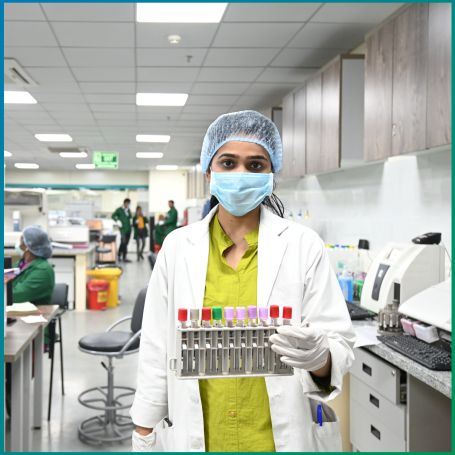
The C/S Wound Swab Test is a microbiological test where a sample (swab) is taken from a wound site to identify the microorganisms, such as bacteria or fungi, that are causing the infection.

A C/S (Culture and Sensitivity) Wound Swab Test is a laboratory diagnostic procedure used to detect infections in wounds, assess the type of microorganisms causing the infection, and determine which antibiotics or antimicrobial agents are most effective in treating the infection. This test plays a critical role in wound management, particularly in cases of chronic or infected wounds that do not respond to standard treatments. It helps clinicians choose the right antibiotics, improve patient outcomes, and prevent the spread of resistant infections.
1] Diagnosis of Infection: The test is essential for identifying the specific microorganism responsible for an infection in the wound. This is crucial for providing targeted treatment.
2] Antibiotic Resistance Monitoring: The test helps identify antibiotic-resistant bacteria, allowing doctors to select the most effective medication and avoid drugs that may be ineffective.
3] Choosing the Right Treatment: Based on the sensitivity results, doctors can choose the right antibiotic or antifungal therapy to effectively treat the infection and promote wound healing.
4] Monitoring Chronic Wounds: For patients with chronic or non-healing wounds (e.g., diabetic ulcers, pressure sores), regular testing can help determine if the wound is infected and guide the appropriate treatment.
5] Preventing Further Complications: Early detection of wound infections can prevent the infection from spreading to deeper tissues or into the bloodstream, reducing the risk of serious complications like sepsis.
1] Preparation: The healthcare provider will clean the wound area gently to remove any debris or old dressings. This helps ensure that the sample collected is as accurate as possible.
2] Swabbing the Wound: A sterile cotton swab is then used to collect a sample of the discharge, tissue, or fluid from the infected area of the wound. The swab is carefully rotated over the wound to obtain an adequate sample of the microorganisms present.
3] Transporting the Sample: The swab is then placed in a sterile container and sent to a microbiology laboratory for culture and sensitivity testing. The sample is cultured in a lab environment to promote the growth of the microorganisms.
4] Culture and Sensitivity Testing: In the lab, the microorganisms are cultured on agar plates, and once they grow, they are identified under a microscope. The laboratory will also perform sensitivity testing by exposing the cultured microorganisms to various antibiotics or antifungal agents to determine which ones are effective against the pathogen.
At Diagnopein, we prioritize accurate, timely, and reliable diagnostics to ensure the best outcomes for our patients. Choosing Diagnopein for your C/S wound swab test means you benefit from a state-of-the-art laboratory, experienced medical staff, and a commitment to patient care. Our lab is equipped with advanced technology for culturing and sensitivity testing, ensuring precise identification of the pathogens causing your wound infection. We also offer quick turnaround times for results, helping you get the right treatment as soon as possible. With a focus on patient comfort and safety, our trained professionals handle each sample with care, providing you with a seamless experience. Additionally, we maintain strict quality control measures to ensure accurate and reliable results every time, making Diagnopein a trusted partner in your healthcare journey.
1. Culture Method
2. Sample
3. Colony Count
4. Organism(s) Isolated
5. Culture Report: Culture yields growth of
6. Culture isolated after 7 days :
7. Culture isolated after 14 days:
8. Culture isolated after 21 days:
9. Ampicillin
10. Amikacin
11. Amoxicillin clavulanate
12. cefoperazon+sulbactam
13. Cefuroxime
14. Cefepime
15. Cefotaxime
16. Ciprofloxacin
17. Ertapenem
18. Gentamicin
19. Imipenem
20. Meropenem
21. Norfloxacin
22. Nitrofurantoin
23. Piperacillin-tazobactam
24. Trimethoprim-Sulfamethoxazole (Cotrimoxazole)
The test helps ensure targeted treatment with the right antibiotics, reduces the risk of antibiotic resistance, promotes faster healing, and aids in managing chronic or non-healing wounds.
The test is performed to diagnose wound infections, identify the pathogens (bacteria, fungi, etc.), and determine the most effective antibiotics or antifungal treatments for the infection.
The test is generally painless. Some discomfort may occur if the wound is inflamed, but the procedure itself is quick and minimally invasive.
A healthcare provider collects a sample from the wound using a sterile cotton swab. The sample is sent to a laboratory, where the microorganisms are cultured and tested for sensitivity to different antibiotics.